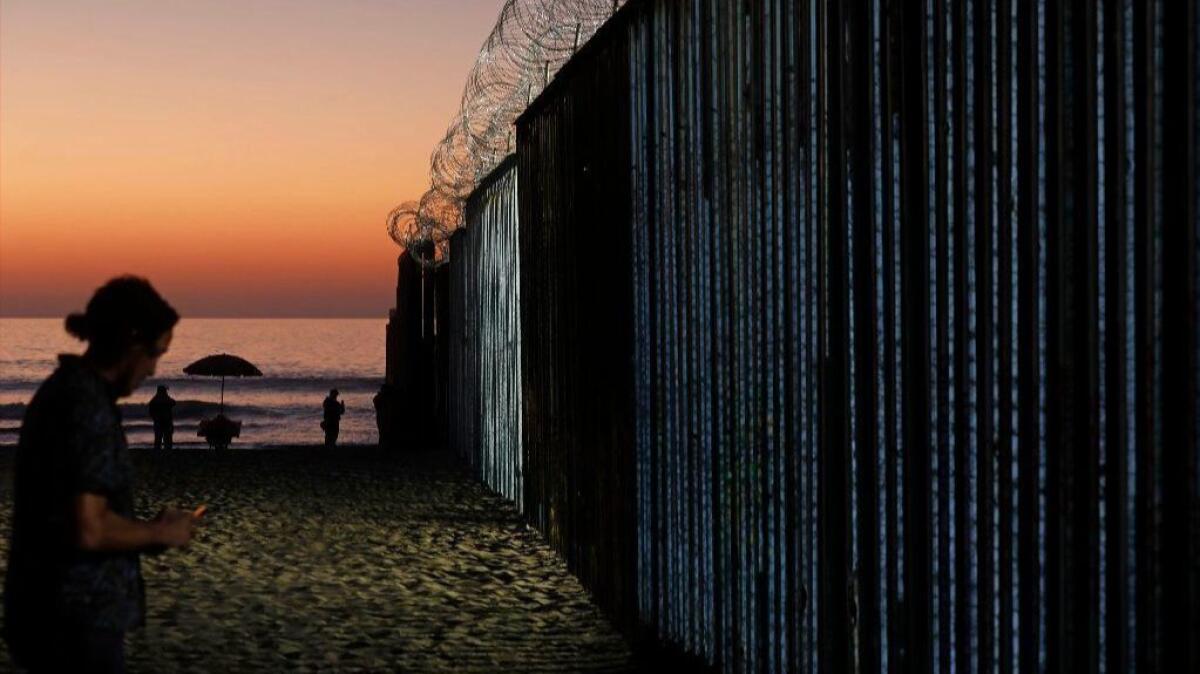Justice Department touts new immigration judges amid struggle to reduce backlog

- Share via
Reporting from Washington — A girl in a pink bow stood proudly center stage Friday at the Justice Department, dwarfed by two statues and adults in black judicial robes behind her.
“We need more judges,” quipped James McHenry, director of the executive office of immigration review, which administers the country’s clogged immigration courts. “We’re now recruiting children too.”
Thus went the ceremony for officials, family and friends to welcome 31 new immigration judges, the second-largest class ever.
The Trump administration has hired more immigration judges in two years than was done in the previous seven years, according to Deputy Atty. Gen. Rod Rosenstein, who plans to retire soon.
But the hiring surge is unlikely to resolve the backlog of nearly 830,000 immigration cases that continues to grow.
Rosenstein said the new judges — on top of 414 currently serving — will help cut the vast logjam.
“Whether the immigration backlog continues to grow depends in large part on how immigration judges discharge their duties,” Rosenstein said.
It will also depend on money. McHenry notified immigration court staffers last week that budget shortfalls had blocked the hiring of additional judges and would delay recruitment of court support staff, according to BuzzFeed.
The caseload worsened significantly during the 35-day government shutdown over President Trump’s demands for a border wall. About 400 immigration judges were furloughed, and tens of thousands of hearings were canceled or delayed, exacerbating delays that now exceed two years on average.
Amid continued fighting with Congress over immigration and border security funding, the White House has requested money for 100 additional teams of immigration judges for 2020.
Migrants routinely wait years for a final determination of whether they can stay in the country, according to a Homeland Security inspector general’s report released Thursday.
In contrast to regular U.S. courts, immigration courts are not in the judicial branch of government. The judges are classified as government attorneys at the Justice Department and they ultimately report to Atty. Gen. William Barr.
The Trump administration has prioritized deporting thousands of migrants in detention and preventing their release into the United States while they await court hearings.
But because of limited detention space and record numbers of asylum seekers and Central American families adding to the backlog, Trump officials have released some detained migrants.
Some administration policies also have proved counterproductive to reducing the backlog, according to some current immigration judges, former officials — and McHenry.
Boosting enforcement efforts without increasing resources for immigration courts “could seriously compromise” their “ability to address [the] caseload and greatly exacerbate the current state of the backlog,” McHenry wrote to Rosenstein in October 2017.
In a plan that officials said would reduce the backlog, the Justice Department at the time instituted a quota for immigration judges and forced them to reopen closed cases. The caseload grew by more than 230,000 new cases last year, however.
McHenry sought to steel the new judges on Friday, saying they were entering into “the most significant and emotionally charged debate over immigration for some time.” He even read out a “pause for tense laughter.”
Twitter: @mollymotoole
More to Read
Get the L.A. Times Politics newsletter
Deeply reported insights into legislation, politics and policy from Sacramento, Washington and beyond. In your inbox twice per week.
You may occasionally receive promotional content from the Los Angeles Times.











